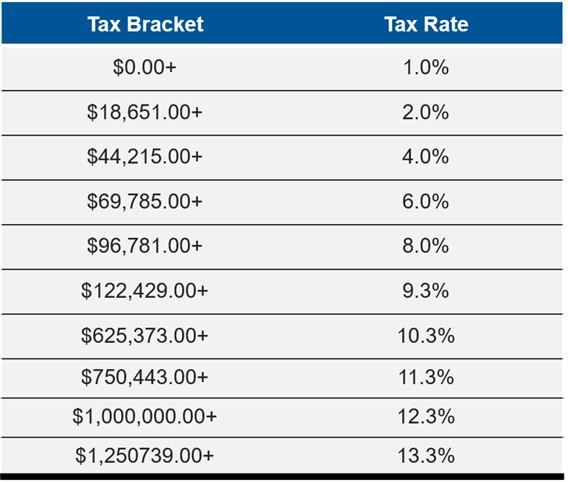California’s Federal Funding Gap: An In-Depth Examination of Tax Contributions Versus Allocations
California’s Disproportionate Federal Tax Contributions Compared to Funding Received
As the most populous state and a leading economic engine in the United States, California generates a substantial portion of the nation’s federal tax revenue. However, despite this significant fiscal input, the state consistently receives less federal funding than the amount its residents and businesses contribute. This funding shortfall raises important concerns about the fairness and effectiveness of federal resource distribution, especially given California’s vast population and extensive infrastructure needs.
Several factors contribute to this funding imbalance, including:
- Substantial tax contributions: California accounts for approximately 14% of total federal tax revenues, reflecting its large economy and population.
- Lower per capita federal spending: On average, federal expenditures per resident in California trail the national average by nearly 18%.
- Allocation methodologies: Federal funding formulas often emphasize criteria that favor states with different demographic or economic characteristics, which can disadvantage California.
| Indicator | California | U.S. Average |
|---|---|---|
| Share of Federal Tax Revenue | 14% | ‚ÄĒ |
| Federal Funding Per Capita | $7,600 | $9,300 |
| Return Rate on Tax Dollars | 65% | 100% |
Consequences for California’s Infrastructure and Public Services
The gap between California’s federal tax contributions and the funding it receives has tangible repercussions on the state’s infrastructure and public service systems. Vital projects such as freeway expansions, mass transit improvements, and water resource management frequently encounter funding shortages, forcing state and local governments to allocate additional resources or delay critical upgrades. This funding deficit exacerbates maintenance backlogs and hampers California’s ability to support its growing population and maintain its economic vitality.
Moreover, the shortfall in federal support affects several key public service areas, including:
- Emergency services, where insufficient federal funding limits modernization efforts and staffing capacity.
- Healthcare initiatives, particularly preventive and community health programs that rely heavily on federal grants.
- Affordable housing development, which increasingly depends on state and local funding due to lagging federal investment.
Understanding the Federal Funding Allocation Mechanisms and Their Impact on California
Federal funding distribution is governed by complex formulas that consider various demographic, economic, and infrastructural factors. However, these formulas often fail to fully capture California’s unique circumstances, such as its high cost of living, urban density, and diverse economic landscape. For instance, many programs prioritize states with higher poverty or unemployment rates, which can disadvantage California despite its substantial public service demands.
Key contributors to the funding disparity include:
- Urban concentration: California’s dense metropolitan areas influence per capita funding calculations differently than more rural states.
- Mismatch between tax input and funding output: The state’s elevated tax contributions do not correspond proportionally to federal aid received.
- Program priorities: Federal initiatives often emphasize rural or economically distressed regions, leaving wealthier but high-cost urban centers underfunded.
| State | Federal Taxes Paid (Billions) | Federal Funds Received (Billions) | Net Balance (Billions) |
|---|---|---|---|
| California | $460 | $375 | ‚ąí$85 |
| Florida | $180 | $210 | +$30 |
| Illinois | $150 | $140 | ‚ąí$10 |
Strategies for Achieving Fairer Federal Funding Distribution
Addressing California’s federal funding shortfall requires a comprehensive overhaul of current allocation methods. Implementing a needs-based funding model that accurately reflects the state’s population size, economic contributions, and infrastructure demands would promote a more just distribution of federal resources. This model should incorporate factors such as urban density, cost of living, and the complexity of public service requirements.
Additional policy measures to consider include:
- Eliminating outdated funding caps: Removing restrictive limits on federal grants would enable California to access funds more commensurate with its needs.
- Strengthening state advocacy: Enhancing California’s influence in federal decision-making through increased congressional representation or dedicated lobbying efforts.
- Establishing bipartisan oversight commissions: Creating panels to regularly review and recommend adjustments to funding formulas based on evolving demographic and economic data.
| Policy Initiative | Anticipated Benefit |
|---|---|
| Needs-Based Funding Formula | More equitable federal grants aligned with California’s specific needs |
| Removal of Grant Caps | Increased federal investment in infrastructure and public services |
| Enhanced State Advocacy | Greater federal support and improved policy influence |
Final Thoughts: Navigating California’s Federal Funding Challenges
California’s role as a national economic leader and its substantial population underscore the importance of equitable federal funding. The persistent gap between the taxes paid by Californians and the federal dollars returned to the state highlights systemic issues in resource allocation. As the state continues to grow and evolve, addressing these disparities will be crucial for sustaining infrastructure, enhancing public services, and supporting long-term development. Ongoing dialogue among policymakers, stakeholders, and federal agencies will be vital to crafting solutions that reflect California’s unique needs and contributions.







